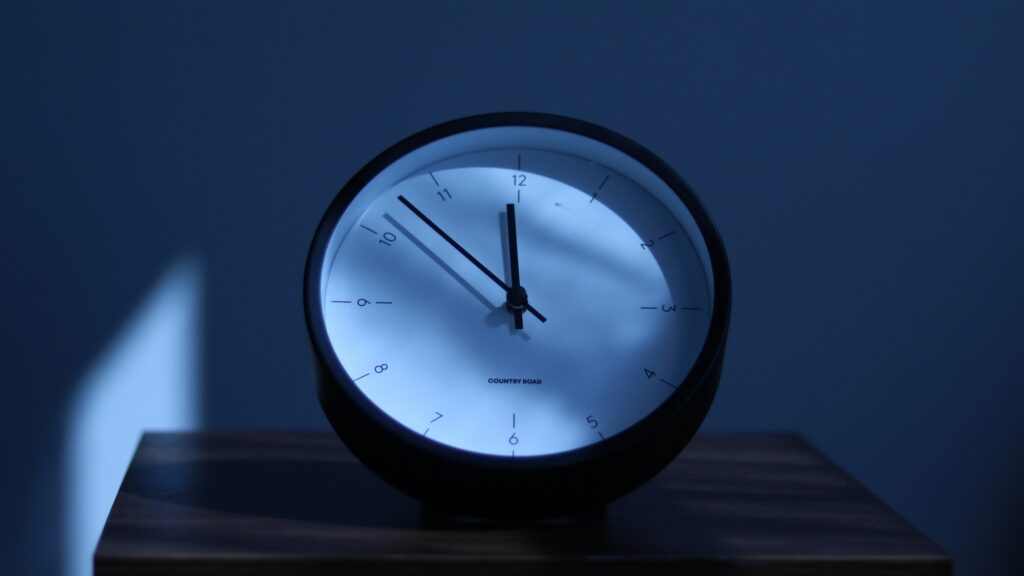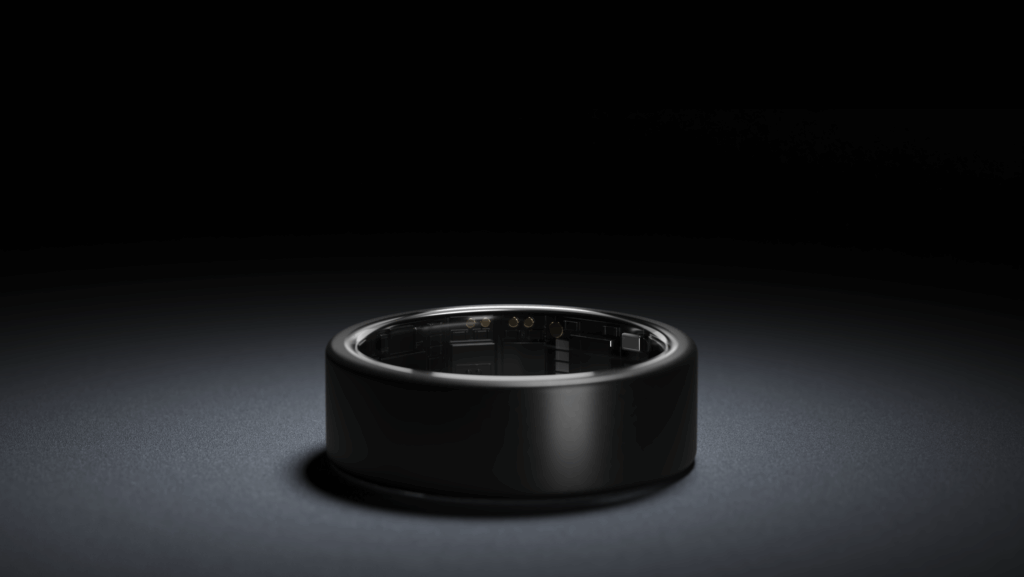Contrary to what many believe, stress isn’t bad. Stress is a part of life, and helps us perform when we need to.
The circadian rhythm, your body’s 24-hour biological clock, determines how resilient or vulnerable you are to stress at different times of day. A burst of stress at midday can sharpen your focus, but late at night, it can derail sleep and recovery and start to affect your health.
In this guide, we explain how stress interacts with your natural circadian rhythm, when stress can be useful, and when it should be avoided.
Timing stress
Just like your phone, your body has an internal clock that governs various functions. The body releases hormones, changes core body temperature, regulates cardiovascular activity, and balances the nervous system based on this internal clock.
For example, the stress hormone cortisol peaks in the morning, helping us feel alert and awake. In the evening, melatonin rises and makes us sleepy. During the daytime, particularly late morning into afternoon, core body temperature and alertness are higher, supporting complex cognitive work; many people also see their best physical output in late afternoon or early evening. This is an ideal window for deep work, presentations, or workouts.
In the morning, too, stress can sometimes help sharpen alertness and performance. The body’s reactivity to stress is generally higher due to the strong cortisol awakening response. Whether this is beneficial depends on context and the task.
By contrast, strong evening arousal can delay sleep onset and disturb sleep quality. Repeated late-night activation can contribute to circadian misalignment.
Distress and recovery

Heart rate variability (HRV), the time interval between consecutive heartbeats, is an important biomarker that tracks the body’s response to stress and recovery balance. Lower overnight HRV indicates incomplete recovery.
Evening stress reduces with lower overnight HRV recovery. And being awake in the late-night window (e.g., after midnight) is linked to poorer mood and cognition.
Moreover, chronic stress at the wrong circadian phase elevates inflammation and disrupts metabolic health. Circadian misalignment, for example, through shift work, leads to mood disorders and cardiometabolic risk. Disrupted sleep from stress can also disturb REM cycles and lead to next-day fatigue, which in turn raises cortisol levels and perpetuates more stress.
How to align stress with your circadian rhythm
Not all stress is negative. Mental stimulation can lead to positive stress, fostering creativity and problem-solving when aligned with the circadian rhythm. However, an overload of stress, illness, and emotional strain is disruptive, especially when it occurs in stress-intolerant windows.
Moreover, individual differences matter. Night-owls often perform better later in the day, so optimal timing should be adapted to personal rhythms.
The trick, then, is to manage the stress. Biomarkers like heart rate variability and core body temperature help us turn stress into an engine of productivity.
How to harness stress and bulletproof your sleep
- Target window: Late morning to mid-afternoon tends to be the highest-yield zone for complex work (alertness and core body temperature are higher). If you’re a strong night-owl, shift this 1–3 hours later.
- Stack the deck: Do deep work first, then meetings/admin. Protect a 90–120-minute block with notifications off and a short break every 45–60 minutes.
- Stress dosing: Use brief, intentional arousal before high-stakes tasks — 2–3 minutes of brisk walking, 20–30 air squats, or a cold face splash. It boosts focus without wrecking the rest of the day.
- Avoid the red zone: After ~8 p.m., skip cognitively intense or emotionally heated work. You’ll pay for it in sleep quality and next-day performance.
- Caffeine rules: Front-load. Last coffee 8–10 hours before bed. No late “rescue” shots that steal your sleep.
- Buffer for fallout: If you must do evening high-stakes work, book a 10–15 minute decompression immediately after (walk, breathwork) to bring your system back down.
Where technology fits in
The Ultrahuman Ring AIR’s Stress Rhythm Score translates this science into daily practice by mapping stress states against circadian phases. It doesn’t aim to eliminate stress, but to help you align it with the body’s natural rhythm, supporting performance, recovery, and long-term resilience.
Stress is inevitable, but mistimed stress is avoidable. By working with your circadian rhythm instead of against it, you can turn stress into a performance tool rather than a liability.
References
- Weitzman ED, Fukushima D, Nogeire C, Roffwarg H, Gallagher TF, Hellman L. Twenty-four hour pattern of the episodic secretion of cortisol in normal subjects. J Clin Endocrinol Metab. 1971 Jul;33(1):14-22. PMID: 4326799.
- Bailey SL, Heitkemper MM. Circadian rhythmicity of cortisol and body temperature: morningness-eveningness effects. Chronobiol Int. 2001 Mar;18(2):249-61. PMID: 11379665.
- Zeng Y, Xiong B, Gao H, Liu C, Chen C, Wu J, Qin S. Cortisol awakening response prompts dynamic reconfiguration of brain networks in emotional and executive functioning. Proc Natl Acad Sci U S A. 2024 Dec 24;121(52):e2405850121. Epub 2024 Dec 16. PMID: 39680766; PMCID: PMC11670246.
- Goldberg ZL, Thomas KGF, Lipinska G. Bedtime Stress Increases Sleep Latency and Impairs Next-Day Prospective Memory Performance. Front Neurosci. 2020 Jul 28;14:756. PMID: 32848547; PMCID: PMC7399217.
- Honkalampi K, Järvelin-Pasanen S, Tarvainen MP, Saaranen T, Vauhkonen A, Kupari S, Perkiö-Mäkelä M, Räsänen K, Oksanen T. Heart rate variability and chronotype – a systematic review. Chronobiol Int. 2021 Dec;38(12):1786-1796. Epub 2021 Jun 16. PMID: 34130562.
- Scheer FA, Hilton MF, Mantzoros CS, Shea SA. Adverse metabolic and cardiovascular consequences of circadian misalignment. Proc Natl Acad Sci U S A. 2009 Mar 17;106(11):4453-8. Epub 2009 Mar 2. PMID: 19255424; PMCID: PMC2657421.
- Morris CJ, Purvis TE, Hu K, Scheer FA. Circadian misalignment increases cardiovascular disease risk factors in humans. Proc Natl Acad Sci U S A. 2016 Mar 8;113(10):E1402-11. Epub 2016 Feb 8. PMID: 26858430; PMCID: PMC4790999.
- Glosemeyer RW, Diekelmann S, Cassel W, Kesper K, Koehler U, Westermann S, Steffen A, Borgwardt S, Wilhelm I, Müller-Pinzler L, Paulus FM, Krach S, Stolz DS. Selective suppression of rapid eye movement sleep increases next-day negative affect and amygdala responses to social exclusion. Sci Rep. 2020 Oct 14;10(1):17325. PMID: 33057210; PMCID: PMC7557922.







